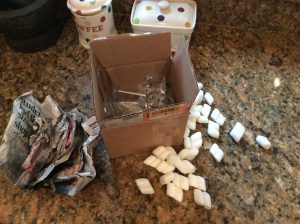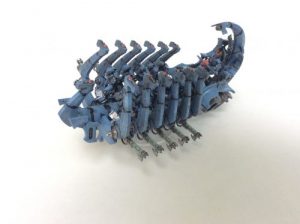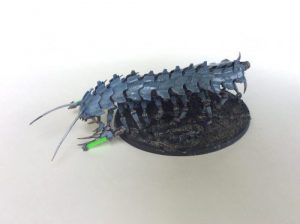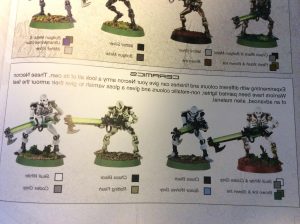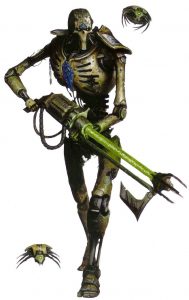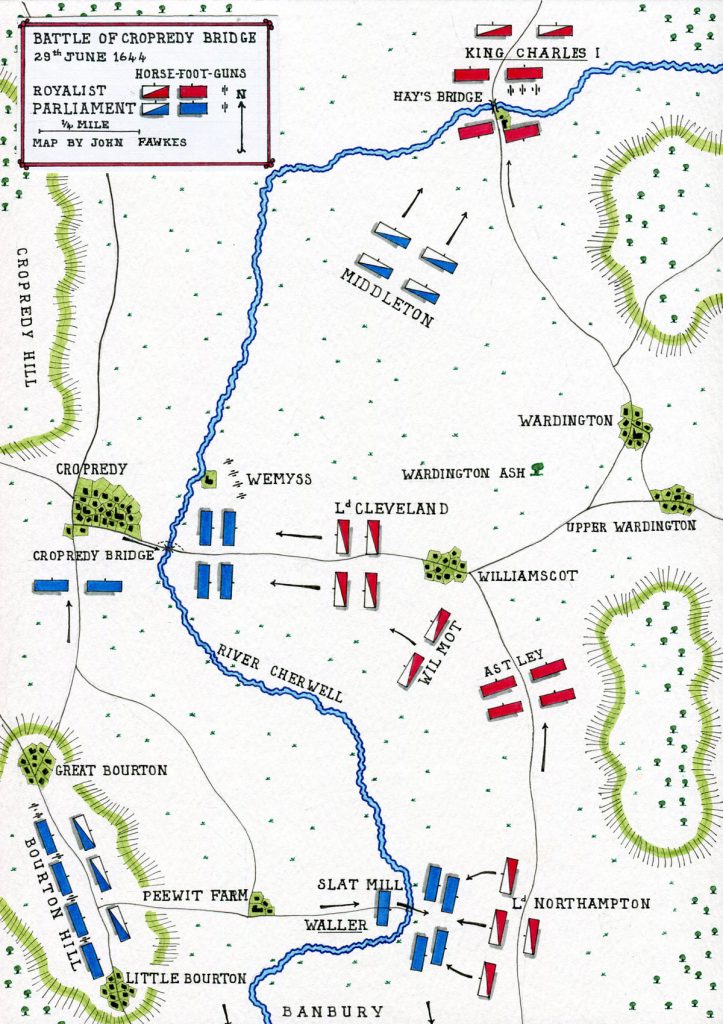Just dusted off my Nids for the first time in 8th edition, so here are my thoughts. The battle was a 100 Power Level game, fought against Josh Gregory’s Raven Guard.

As with previous editions, it was a bloody affair with the Nids, with stuff being taken off by the handful. The outcome? Well, in terms of Objectives it was a 7-6 victory to the Emperor, but to be fair I called the game early as I was in danger of getting tabled! So in some regards got my ass handed to me. In my defence:
· It’s a pretty old army, which grew out of the Battle of Macragge boxed set (4th Edition!), and contains none of the more recent models;
· Josh just played better than me!
So don’t be too disheartened if you’re seeking to use Tyranids in 8th edition.

The Army List
Playing using PLs rather than points meant that the army was genuinely WYSIWYG-ed. None of this tooling-up malarkey from either army. My list was very much based on a “Gribbly” approach, i.e. lots and lots of low value stuff. The list comprises:
· 2 HQs…a Hive Tyrant (non-flying variety but armed with a very nice Heavy Venom Cannon); and a Broodlord;
· A unit of 6 Warriors, with Scything Talons and 4 different types of ballistic weapon;
· Two units of Genestealers, 15 and 20-strong respectively;
· Two units of Termagaunts, both 20 strong, one armed with Fleshborers and the other with Devourers;
· One unit of Hormagaunts, 30 strong, with Poison Sacs (modelled on, honest);
· One unit of Ripper Swarms, 8 bases;
· Two Carnifexes, one tooled up for close combat, the other for shooting;
· A small unit of 3 Zoanthropes;
· A single Biovore.
That’s 113 bases of Gribblies! So pretty old school.
The Way the Game Played
Six objective markers were placed under the conditions of the “Cloak & Dagger” scenario, slightly favouring me.
I deployed with the Gaunts out in front, Genestealers immediately behind them, and the bigger creatures (including Synapse creatures) immediately behind or to the flank of the horde. Only the Ripper Swarms were kept in reserve. Josh deployed 5 small units of Scouts with sniper rifles at some distance, plus two big aircraft, but the rest of his stuff off table.

I got first move. My initial approach was simple…the horde plus their supporting models went screaming across the table towards the Scouts in the old [Nid] style. First turn wasn’t conspicuous by its success. Firstly, under a special Raven Guard rule, a couple of mean looking Tactical Squads appeared (literally) out of nowhere. Then my shooting did next to nothing (a familiar Nid refrain). Then my Hormagaunts failed to charge (despite casting a Psychic spell on them allowing them to Advance AND charge, and using a CP to roll another dice…). Still, the horde was looking good and relatively untouched…
The it was Raven Guard turn one. Things started to go south very rapidly from that point:
· Stuff dropped from the skies all around the Tyranid horde, Assault Marines and Shrike himself, making it difficult to focus on single target;
· An Callidus Assassin appeared, not doing a lot of damage but tying up the shooty Carnifex and the Zoanthropes for most of the game;
· The Hormagaunts managed to charge in against a tactical Squad but were relatively ineffectual against the Marines’ armour save;
· The two units of Termagaunts, realising their shooting was ineffectual, also charged in, but made little headway against Shrike and another Tactical Squad respectively;
· The Warriors’ firing was completely ineffectual against the aircraft and Shrike;
· And my two most impressive units, the Hive Tyrant and the melee Carnifex, meandered around in the centre of the table, looking for targets that never emerged. Eventually these were picked off by a combination of aircraft and snipers.
The Raven Guard didn’t have it all their own way. The Genestealers wiped out two Imperial units in melee; the Ripper Swarms managed a handy charge the turn they came on, against a Scout unit which went well; and eventually got rid of the pesky Assassin. But when the Hive Tyrant went down I knew it was time to call it a day…
Lessons Learned
To be honest, given the vintage of my army I’m not really in a position to offer advice on how to play a modern Nid army. I collected mine before the days of Trygons, Tyrannocytes, Tervigons, Venomthropes etc. However, for those who still seek to win with a Gribbly army a few pointers:
Genestealers : These bad boys are BACK, baby! Remember how awesome they were in 4th Edition? Not only beating up Terminators but being able to flip a Land Raider? Well, they had their wings clipped a bit in 5th-7th Edition, so using them dropped out of favour, but in 8th just look at some of their attributes:
· Movement: Fast! Not only is their base move 8”, but they have a special rule whereby they can Advance and Charge in the same turn. Assuming average variable rolls, they can cover 18.5” into combat in a turn;
· Attacks. Three per model, but 4 per model if the unit is 10+ strong!;
· To Hit. 3+, but 2+ if the Broodlord is within 6”;
· To wound. Wounding a Space Marine on a 4 (resolved at -1 AP), but any rolls of 6 on the To Wound roll is resolved on a -4 AP;
· To save: This was always the ‘Stealers Achillies Heel, but at least the 5+ is now Invulnerable.
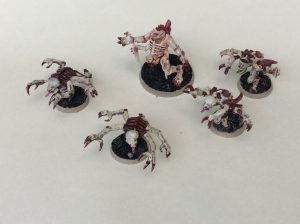
Psykers: The Nids have some cool Psychic abilities, all resolved on a 6+. And it doesn’t need to depend on your Hive Tyrant, your Zoanthropes can dish out the damage too (and only 6 PL for 3 models):
· The Horror: Enemy unit suffers -1 To Hot and -1 Ld until the start of your next Psychic phase;
· Catalyst: Assume Necron-like abilities! A friendly unit can ignore a wound on a 5 or 6 after all else has failed;
· Onslaught: A friendly unit can move, advance, shoot and charge in the same turn with Zero penalties.
Other advice:
· You want your Gaunt units as big as possible and as cheap as possible (don’t waste points on Devourers, Toxin Sacs etc…unless you’re up against Imperial Guard);
· Use sacrificial Gaunt units to screen Genestealers and Carnixes, plus a foot-bound Hive Tyrant. They can achieve little else;
· Ripper Swarms. Use in smaller units and only to grab objectives while the rest of the army is involved in serious business;
· Tyrannid Warriors. Maybe I didn’t use them right. They seem to have little use other than as another Synapse unit. So either ditch them or reduce to 3 strong and hide behind the hordes of Gaunts;
· Don’t bother with Biovores unless you have a couple of points looking for a home.
Other than that, check out some better advice than I can offer via YouTube!



